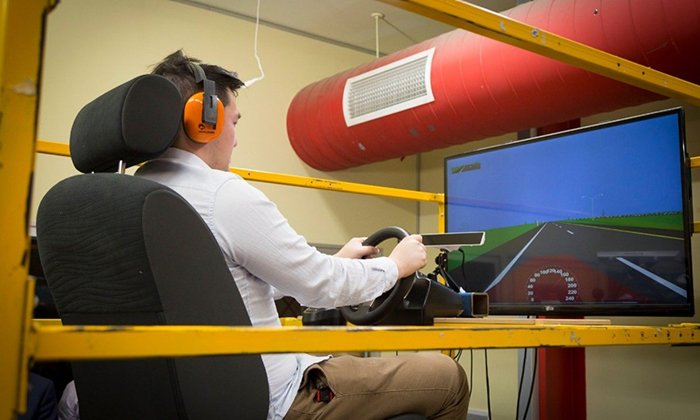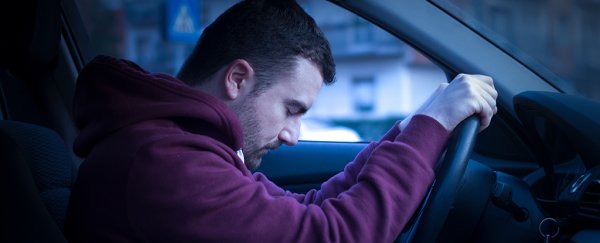Most of us have probably felt sleepy on a car journey, but it's not always due to an early start, or a long day, or a lack of caffeine.
New research shows that something in the actual act of car travel can make even the most alert of us start to feel drowsy.
It's all to do with the vibrations a car makes as it moves: they can bring on sleepiness in just 15 minutes, the new study shows.
That's something for both car manufacturers and road safety experts to think about, according to the researchers from RMIT University in Australia. They want to conduct further studies into how car seat vibrations could be secretly bringing on sleep.
"When you're tired, it doesn't take much to start nodding off and we've found that the gentle vibrations made by car seats as you drive can lull your brain and body," says one of the team, Stephen Robinson.
 The virtual simulator. (RMIT)
The virtual simulator. (RMIT)
"Our study shows steady vibrations at low frequencies – the kind we experience when driving cars and trucks – progressively induce sleepiness even among people who are well rested and healthy."
Robinson and his colleagues hooked 15 volunteers up to a virtual simulator that they could vibrate at different frequencies. The volunteers were tested twice, once with no vibration, and once with low-frequency 4-7 Hz vibrations.
They then measured the heart rate variability (HRV) of the participants over the course of each 60-minute session. HRV is an indicator of drowsiness because it shows the body tweaking its central nervous system as it gets tired.
The monitors showed drowsiness kicking in for the drivers after just 15 minutes. On average, the drowsiness was "significant" by 30 minutes, and the volunteers continued to feel sleepier and sleepier until the tests finished.
What might be happening, the researchers say, is that the brain becomes synchronised to the vibrations and enters an early stage of sleep – hence why you might get a whole car full of people nodding off on a long trip.
The study does have some limitations we should talk about: only 15 people were tested, and at only one narrow range of frequencies.
They were also sent down a rather monotonous, two-lane virtual highway, without the distractions of a real drive.
But with tiredness a factor in around 1 in 5 fatal accidents on the road, it's important that we find out exactly what's going on. The researchers want to continue their work by looking at bigger groups of people and more ranges of frequencies.
Even if the effect can't be negated completely, changes in car seat design could minimise it. In fact, the study team thinks the opposite effect could be engineered – at least until self-driving cars arrive and we can all fall asleep in peace.
"Our research also suggests that vibrations at some frequencies may have the opposite effect and help keep people awake," says Robinson.
"So we also want to examine a wider range of frequencies, to inform car designs that could potentially harness those 'good vibrations'."
The research has been published in Ergonomics.
